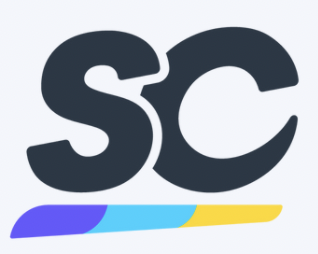Title Page
-
Site conducted
-
Author(s)
-
Contributors
-
Department
-
Campus
-
Conducted on
-
Prepared by
-
Location
EXECUTIVE SUMMARY
-
ON to view the executive summary<br>OFF to remove from the final document
-
This section should provide general information on the issues surrounding the business problem and the proposed project or initiative created to address it. Usually, this section is completed last after all other sections of the business case have been written. This is because the executive summary is exactly that, a summary of the detail that is provided in subsequent sections of the document.
Issue
-
This section should briefly describe the business problem that the proposed project will address. This section should not describe how the problem will be addressed, only what the problem is.
Anticipated Outcomes
-
This section should describe the anticipated outcome if the proposed project or initiative is implemented. It should include how the project will benefit the business and describe what the end state of the project should be.
Recommendation
-
This section summarizes the approach for how the project will address the business problem. This section should also describe how desirable results will be achieved by moving forward with the project.
Justification
-
This section justifies why the recommended project should be implemented and why it was selected over other alternatives. Where applicable, quantitative support should be provided and the impact of not implementing the project should also be stated.
BUSINESS CASE ANALYSIS TEAM
-
This section describes the roles of the team members who developed the business case. It is imperative that participants and roles are clearly defined for the business case as well as throughout the life of the project.
Team Member
-
Role
-
Description
-
Name, Title
PROBLEM DEFINITION
Problem Statement
-
This section describes the business problem that this project was created to address. The problem may be process, technology, or product/service oriented. This section should not include any discussion related to the solution.
Organizational Impact
-
This section describes how the proposed project will modify or affect the organizational processes, tools, hardware, and/or software. It should also explain any new roles which would be created or how existing roles may change as a result of the project.
Technology Migration
-
This section provides a high-level overview of how the new technology will be implemented and how data from the legacy technology will be migrated. This section should also explain any outstanding technical requirements and obstacles which need to be addressed.
PROJECT OVERVIEW
-
This section describes high-level information about the project to include a description, goals and objectives, performance criteria, assumptions, constraints, and milestones. This section consolidates all project-specific information into one chapter and allows for an easy understanding of the project since the baseline business problem, impacts, and .recommendations have already been established.
Project Description
-
This section describes the approach the project will use to address the business problem(s). This includes what the project will consist of, a general description of how it will be executed, and the purpose of it.
Goals and Objectives
-
This section lists the business goals and objectives which are supported by the project and how the project will address them.
Project Performance
-
This section describes the measures that will be used to gauge the project’s performance and outcomes as they relate to key resources, processes, or services.
Project Assumptions
-
This section lists the preliminary assumptions for the proposed project. As the project is selected and moves into detailed project planning, the list of assumptions will most likely grow as the project plan is developed. However, for the business case there should be at least a preliminary list from which to build.
Project Constraints
-
This section lists the preliminary constraints for the proposed project. As the project is selected and moves into detailed project planning, the list of constraints will most likely grow as the project plan is developed. However, for the business case there should be at least a preliminary list from which to build.
Major Project Milestones
-
This section lists the major project milestones and their target completion dates. Since this is the business case, these milestones and target dates are general and in no way final. It is important to note that as the project planning moves forward, a base-lined schedule including all milestones will be completed.
Milestones / Deliverables
-
Specify Milestones / Deliverables
-
Target Date
COST BENEFIT ANALYSIS
-
Many consider this one of the most important parts of a business case as it is often the costs or savings a project yields which win final approval to go forward. It is important to quantify the financial benefits of the project as much as possible in the business case. This is usually done in the form of a cost benefit analysis. The purpose of this is to illustrate the costs of the project and compare them with the benefits and savings to determine if the project is worth pursuing.
Action
-
Specify Action
-
Action Type
-
Description
-
First Year Costs (- indicates anticipated savings)
-
Net First Year Savings
ALTERNATIVES ANALYSIS
-
All business problems may be addressed by any number of alternative projects. While the business case is the result of having selected one such option, a brief summary of considered alternatives should also be included—one of which should be the status quo, or doing nothing. The reasons for not selecting the alternatives should also be included.
Alternative
-
Specify Alternative Option
-
Reasons for Not Selecting Alternative
IMPACT ANALYSIS
-
Provide impact ranking for each of the below.
Systems Impacted
-
Select the option that reflects the level of integration required with other university systems (i.e. Directory, Treasurer’s System, Workday, etc.).
- Low – 1 Internal System
- Med / Low – 1 External System
- Medium – 1 Internal System
- Med / High – 1 External System
- High – Significant % of Systems
Campuses Impacted
-
Select the option that reflects the number of campuses that will be impacted by this project (your department only = “Low”; enterprise./ multi-campus = “High”).
Compliance
-
Select the option that reflects the level of compliance that is related to this project. For example, if this project is necessary to comply with a federal regulation, choose “High”
Conformity to Standards
-
Select the option that reflects the level that this project will confirm to established university standards. If new policies will need to be executed, choose “High”.
- Low – Conforms to Current Standards
- Med – Conforms w/ Exceptions
- High – Requires New Standards
Cost Savings
-
Select the option that reflects the level of cost savings that may occur as a result of this project.
Cost of Project
-
Select the option that reflects the cost of this project. Include costs of the product, implementation services, additional staff, and other resources.
Duration
-
Select the option that reflects the amount of time expected to complete the project from start to finish.
Annual Revenue Increase
-
Select the option that reflects the level of revenue increase that may occur as a result of this project.
Resource Hours Needed for Project
-
Select the option that reflects the level of total hours spent to complete the project from start to finish.
- Low – Less than 160 Hours
- Med / Low – 161 – 500 Hours
- Medium – 500 – 1,000 Hours
- Med / High – 1,001 – 5,000 Hours
- High – More than 5,000 Hours
Internal Experience on Similar Project(s)
-
Select the option that reflects whether prior experience with a like project exists at the university. If this project is the first of its kind, choose “High”.
Alignment Score
-
Select the number of University strategic objectives your project will align with.
APPROVALS
-
The business case is a document with which approval is granted or denied to move forward with the creation of a project.
Therefore, the document should receive approval or disapproval from its executive review board.
Draft
-
Specify Draft
-
Date
-
Approver Name
-
Comments
Sign Off
-
Prepared by







